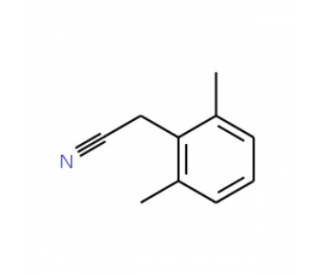详细说明
Species Reactivity
Mouse
Specificity
Detects mouse FGF-4 in direct ELISAs and Western blots. In Western blots, 100% cross-reactivty with recombinant human (rh) FGF-4 and rhFGF-7 is observed. No cross-reactivity with rhFGF-3, -5, -9, -17, recombinant mouse FGF-6, -8b, -8c, or -10 is observed.
Source
Monoclonal Rat IgG 2A Clone # 678430
Purification
Protein A or G purified from hybridoma culture supernatant
Immunogen
E. coli-derived recombinant mouse FGF-4
Ala30-Leu202
Accession # P11403Formulation
Lyophilized from a 0.2 μm filtered solution in PBS with Trehalose. *Small pack size (SP) is supplied as a 0.2 µm filtered solution in PBS.
Label
Unconjugated
Applications
Recommended
ConcentrationSample
Western Blot
1 µg/mL
See below
Please Note: Optimal dilutions should be determined by each laboratory for each application. are available in the Technical Information section on our website.
Data Examples
Western Blot | Detection of Mouse FGF‑4 by Western Blot. Western blot shows lysates of 4T1 mouse breast cancer cell line. PVDF membrane was probed with 1 µg/mL of Rat Anti-Mouse FGF‑4 Monoclonal Antibody (Catalog # MAB58461) followed by HRP-conjugated Anti-Rat IgG Secondary Antibody (Catalog # ). A specific band was detected for FGF‑4 at approximately 22 kDa (as indicated). This experiment was conducted under reducing conditions and using . |
Preparation and Storage
Reconstitution
Sterile PBS to a final concentration of 0.5 mg/mL.
Shipping
The product is shipped at ambient temperature. Upon receipt, store it immediately at the temperature recommended below. *Small pack size (SP) is shipped with polar packs. Upon receipt, store it immediately at -20 to -70 °C
Stability & Storage
Use a manual defrost freezer and avoid repeated freeze-thaw cycles.
12 months from date of receipt, -20 to -70 °C as supplied.
1 month, 2 to 8 °C under sterile conditions after reconstitution.
6 months, -20 to -70 °C under sterile conditions after reconstitution.
Background: FGF-4
FGF-4 (fibroblast growth factor-4), also known as FGF-K or K-FGF (Kaposi’s sarcoma-associated FGF), is a 25 kDa secreted, heparin-binding member of the FGF family (1, 2). The mouse FGF-4 cDNA encodes 202 amino acids (aa) with a 29 aa signal sequence and a 173 aa mature protein with an FGF homology domain that contains a heparin binding region near the C-terminus (2). Mature mouse FGF-4 shares 87%, 90%, 87% and 85% aa identity with human, rat, canine and bovine FGF‑4, respectively. Human FGF-4 has been shown to exhibit cross species activity. Expression of FGF-4 and its receptors, FGF R1c, 2c, 3c and 4, is spatially and temporally regulated during embryonic development (1, 3). Its expression in the trophoblast inner cell mass promotes expression of FGF R2, and is required for maintenance of the trophectoderm and primitive endoderm (3‑5). Later in development, FGF-4 works together with FGF-8 to mediate the activities of the apical ectodermal ridge, which direct the outgrowth and patterning of vertebrate limbs (3, 6‑9). FGF-4 is proposed to play a physiologically relevant role in human embryonic stem cell self-renewal. It promotes stem cell proliferation, but may also aid differentiation depending on context and concentration, and is often included in embryonic stem cell media in vitro (10‑12). A C-terminally truncated 15 kDa isoform that opposes full-length FGF-4 and promotes differentiation is endogenously expressed in human embryonic stem cells. FGF-4 is mitogenic for fibroblasts and endothelial cells in vitro and has autocrine transforming potential (13). It is a potent angiogenesis promoter in vivo and has been investigated as therapy for coronary artery disease (14).
References:
Reuss, B. and O. von Bohlen und Halbach (2003) Cell Tiss. Res. 313:139.
Hebert, J.M. et al. (1990) Dev. Biol. 138:454.
Niswander, L. and G.R. Martin (1992) Development 114:755.
Feldman, B. et al. (1995) Science 267:246.
Goldin, S.N. and V.E. Papaioannou (2003) Genesis 36:40.
Sun, X. et al. (2002) Nature 418:501.
Boulet, A.M. et al. (2004) Dev. Biol. 273:361.
Yu, K and D.M. Ornitz (2008) Development 135:483.
Mariani, F.V. et al. (2008) Nature 453:401.
Johannesson, M. et al. (2009) PLoS ONE 4:e4794.
Kunath, T. et al. (2007) Development 134:2895.
Mayshar, Y. et al. (2008) Stem Cells 26:767.
Hajitou, A. et al. (1998) Oncogene 17:2059.
Flynn, A. and T. O’Brien (2008) IDrugs 11:283.
Long Name:
Fibroblast Growth Factor 4
Entrez Gene IDs:
2249 (Human); 14175 (Mouse); 116499 (Rat)
Alternate Names:
FGF4; FGF-4; fibroblast growth factor 4; HBGF-4; HBGF-4Transforming protein KS3; heparin secretory transforming protein 1; Heparin secretory-transforming protein 1; Heparin-binding growth factor 4; HST-1; HST-1HSTF-1; HSTF1fibroblast growth factor 4 splice isoform; HSTFGF-4; human stomach cancer, transforming factor from FGF-related oncogene; kaposi sarcoma oncogene; KFGF; K-FGF; KS3; oncogene HST











 粤公网安备44196802000105号
粤公网安备44196802000105号